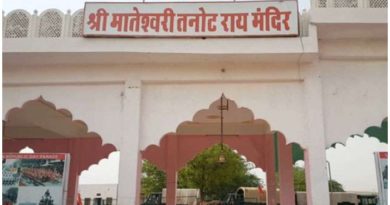Sustainable Pilgrimage: Eco-Friendly Practices in Char Dham Yatra
Introduction: The Char Dham Yatra, which includes the sacred pilgrimage sites of Yamunotri, Gangotri, Kedarnath, and Badrinath in India’s picturesque Himalayas, has enormous religious significance for millions of devotees. However, the pilgrimage’s popularity has brought environmental challenges, endangering the pristine beauty of these revered locations. The concept of Sustainable Pilgrimage has emerged in response to the growing need for sustainable tourism and environmental conservation. This method focuses on incorporating eco-friendly practices into religious journeys in order to preserve natural resources, biodiversity, and cultural heritage. With its spiritual allure and ecological significance, the Char Dham Yatra serves as a compelling case study for the implementation of eco-friendly initiatives. This introduction examines the significance of implementing sustainable practices in the Char Dham Yatra, emphasizing the importance of striking a harmonious balance between religious traditions and environmental preservation. This pilgrimage can remain a source of spiritual solace while protecting the fragile ecosystems and cultural heritage that define these revered sites by embracing eco-friendly measures.
Energy Efficiency:
Energy efficiency is one of the fundamental pillars of sustainable pilgrimage in the Char Dham Yatra. Recognizing the critical role that energy consumption plays in pilgrimage infrastructure, it is critical to implement energy-efficient practices. The pilgrimage sites can significantly reduce their reliance on non-renewable resources by harnessing the power of renewable energy sources such as solar energy. Installing solar panels for lighting, water heating, and other energy needs reduces carbon emissions while also setting a precedent for environmentally conscious pilgrimages. Furthermore, the widespread use of energy-efficient LED lighting systems in pilgrim shelters and public spaces reduces energy consumption even further. The Char Dham Yatra not only preserves the sanctity of the environment through these initiatives, but it also sets an inspiring example for pilgrims, encouraging them to embrace sustainable living practices in their daily lives. Furthermore, these energy-saving measures not only support the global call to combat climate change, but also ensure a more sustainable future for pilgrimage sites and the communities that rely on them.
Waste Management:
The efficient management of waste is a critical component of fostering an eco-friendly pilgrimage experience in the Char Dham Yatra. With so many pilgrims visiting these holy places, waste generation can be a significant environmental challenge. A comprehensive waste management system must be implemented to address this issue. Pilgrims can be encouraged to dispose of their waste responsibly by introducing segregated waste bins for biodegradable and non-biodegradable waste along the yatra route. Organic waste, such as flowers and food offerings, can be composted, producing nutrient-rich compost for local agricultural use. Simultaneously, recycling facilities for materials such as plastic, paper, and glass can be established, reducing the strain on landfills and promoting the circular economy. Furthermore, waste management initiatives should include the proper disposal of hazardous waste, such as batteries and electronic equipment, to avoid harming the local environment. To educate pilgrims on the importance of waste reduction and recycling, educational programs and awareness campaigns can be organized. By incorporating these waste management practices, the Char Dham Yatra not only preserves its spiritual sanctity but also serves as a model for sustainable waste management, demonstrating how religious pilgrimages can coexist with environmental conservation efforts.
Transportation:
Addressing the environmental impact of transportation is critical in the Char Dham Yatra’s journey toward a sustainable pilgrimage experience. The influx of pilgrims frequently causes traffic congestion and increases vehicle emissions, posing significant challenges to the region’s air quality and overall environmental health. Promoting eco-friendly transportation alternatives is critical to mitigating these issues. Encourage pilgrims to use public transportation, reducing the number of private vehicles on pilgrimage routes, is one effective strategy. Furthermore, the introduction of electric vehicles or battery-powered buses can be critical in reducing carbon emissions and air pollution. The Char Dham Yatra can significantly reduce its carbon footprint by investing in a well-organized public transportation system and incorporating electric vehicles into pilgrimage infrastructure. Furthermore, initiatives to optimize travel routes, reduce idle time, and implement efficient scheduling can boost the efficacy of these efforts. Pilgrim organizers can also raise visitor awareness about the environmental benefits of using eco-friendly transportation options, encouraging pilgrims to take responsibility.
Monitoring and Regulation:
Effective monitoring and regulation are essential tools in the pursuit of sustainable pilgrimage practices, ensuring the preservation of the environment and cultural heritage during the Char Dham Yatra. Regular environmental audits and assessments are required to assess the impact of pilgrim activities on the region’s fragile ecosystems and biodiversity. These audits can provide valuable insights into areas that need immediate attention, allowing for timely interventions and corrective actions. By monitoring the environmental health of pilgrimage sites, pilgrimage organizers can make informed decisions, adapting strategies to effectively mitigate negative impacts. Furthermore, strict regulations and penalties should be enforced to discourage littering, unauthorized construction, and other environmentally harmful activities. Through signage, educational materials, and guides, pilgrims must be made aware of the rules and regulations, emphasizing the importance of their role in preserving the sanctity of pilgrimage sites. Community involvement and local government involvement are critical to effectively enforcing these regulations. The Char Dham Yatra can maintain its spiritual significance while also protecting the region’s natural beauty and biodiversity through proactive monitoring, stringent regulation, and community participation. The pilgrimage can serve as a beacon of responsible tourism, setting a precedent for sustainable pilgrimage experiences around the world by maintaining a delicate balance between religious traditions and environmental conservation.
Conclusion:
The Char Dham Yatra, which draws millions of pilgrims each year, is a testament to the intertwining of spirituality, culture, and nature. The pilgrimage’s popularity, however, has created significant environmental challenges, necessitating the implementation of sustainable practices to ensure its long-term viability. The Char Dham Yatra can become a model of sustainable pilgrimage by taking a holistic approach that includes energy efficiency, waste management, eco-friendly transportation, and vigilant monitoring. The pilgrimage sites can maintain their sanctity while minimizing their ecological footprint by harnessing renewable energy, implementing waste segregation and recycling, promoting eco-friendly transportation alternatives, and enforcing strict regulations. Pilgrim education and awareness initiatives play a critical role in instilling a sense of responsibility and encouraging mindful behaviour.




